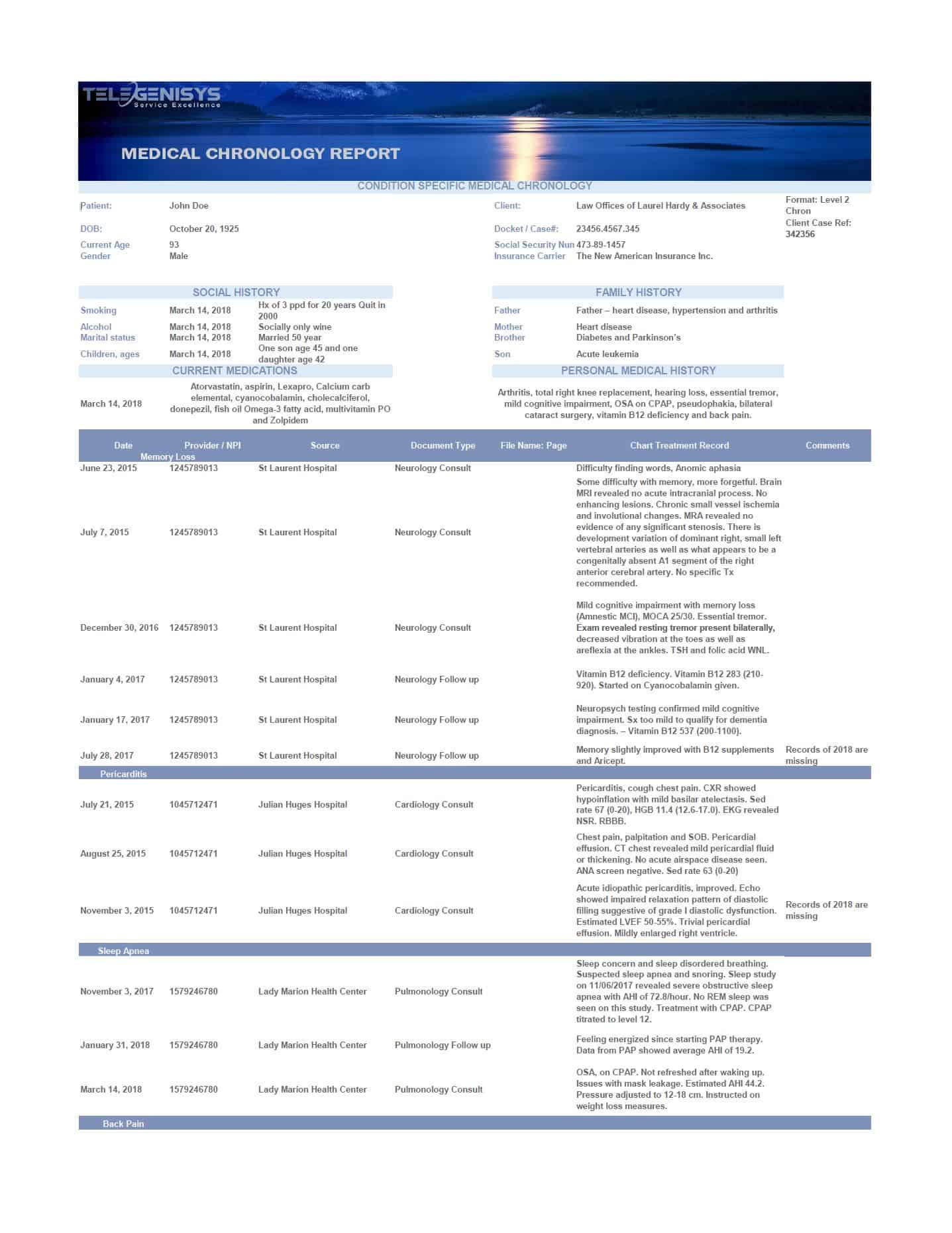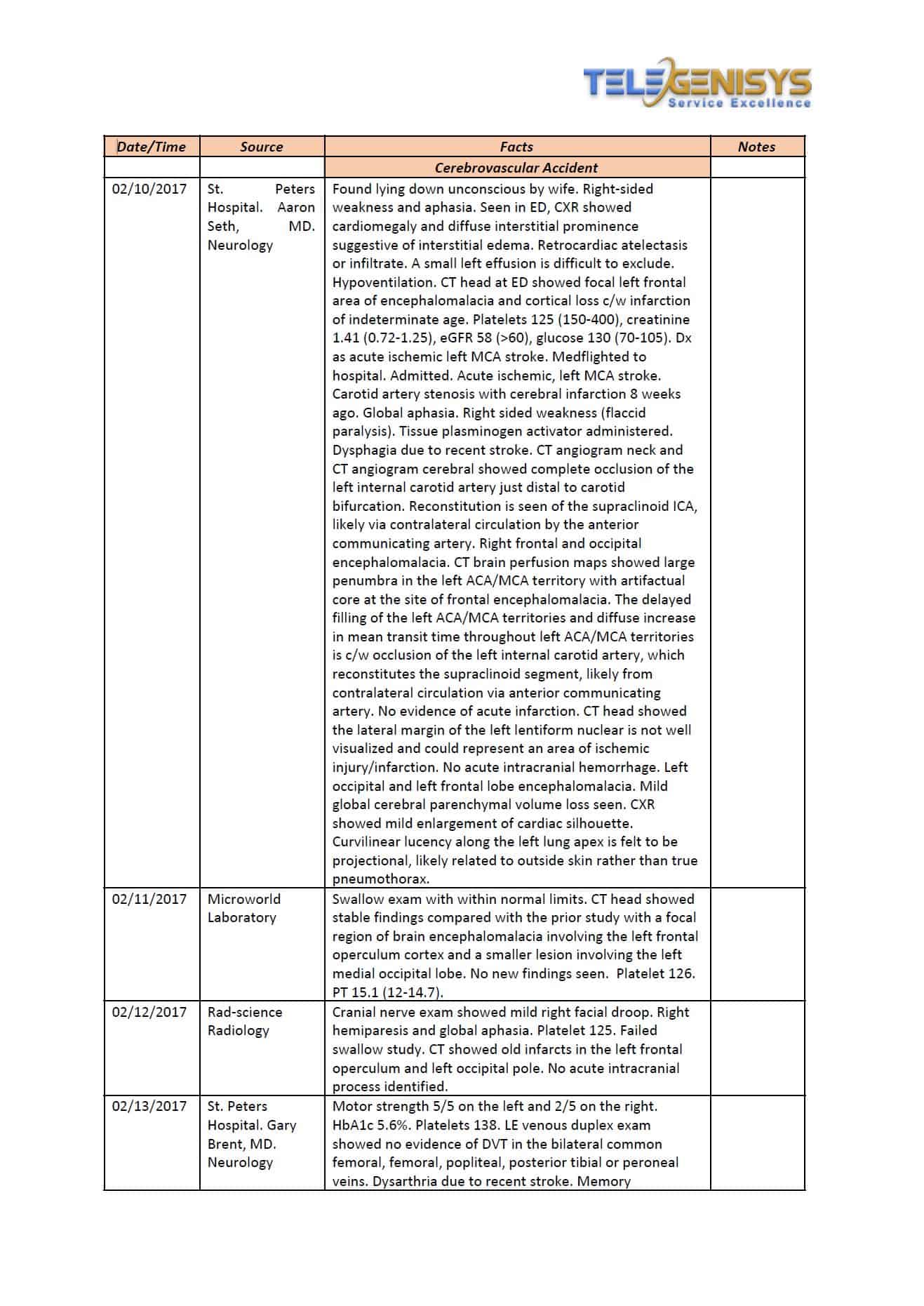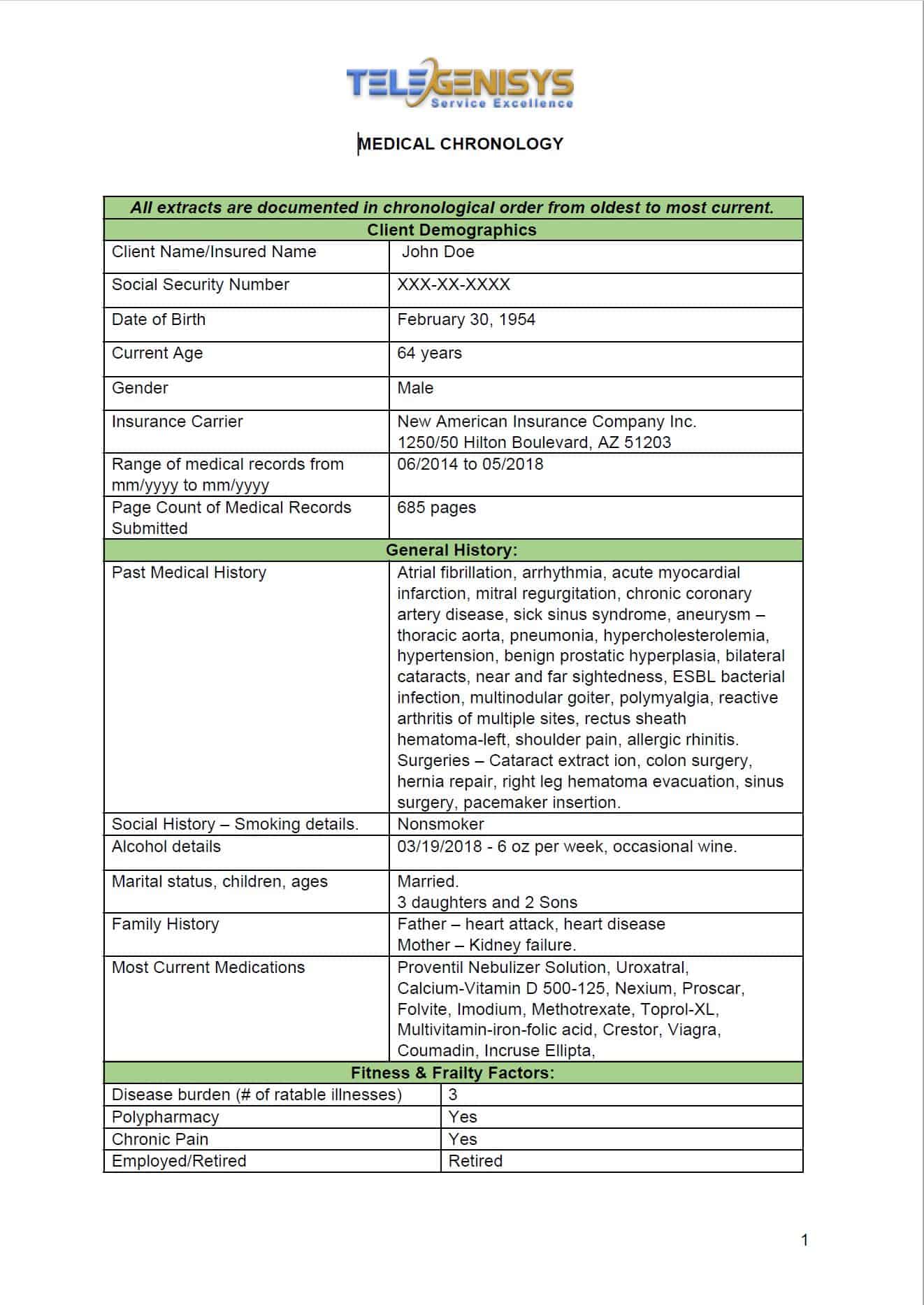A medical summary is a presentation of medical facts about a person that communicates the health history, current well being and likely expectation of medical condition in the future.
When making a summary, care is taken to examine the completeness of records and relevance of information extracted from attending physician reports, labs, radiology, and other treatment histories. Summaries almost always extract and present patients ability to perform daily tasks including work, assessment factors of fitness and frailty, social, family and personal medical history.
When done well, the construction of medical summaries begins by understanding the chronology of medical facts. This involves a detailed chronology by types of doctors, medical conditions and complaints, medications, hospital visits and subsequent procedures over time. This chronology provides an understanding of a person’s current complaints and how they developed over time.
Medical Summaries are selective about what they include depending on use. For example summaries for legal use are generally medical fact driven and involve an explanation of the onset of medical conditions and disease or symptom progression. On the other hand, summaries done for life insurance are geared to highlighting ratable conditions which affect mortality and longevity. Medical Research Summaries (used for patient intake, medical research, consulting opinions, etc.) provide additional information instrumental in developing treatment plans and almost always include Allergies, Contact, Implants, and medical devices, etc. Summaries are therefore customized to usage and synopses that are designed to allow the audience to reach some conclusion.

What medical summaries are not!
It is important to note that summaries do not diagnose, they do not generate an opinion about treatment or provide a medical conclusion. They are a restatement of facts in medical reports and any medical review is provided separately from the summary which abides by facts in medical records only.
Types of Summaries
While summaries may contain data customized for a specific use, there are essentially several styles of presentation.
- Tabular
- Annotative
- Narrative
Telegenisys has developed over 100 different formats but they generally fall in these three categories of presentation.
Typically a client reviews relevant formats and selects a specific format, a hybrid or a completely custom format.

Deep Document Reference - Example 01
Deep document references are used for legal uses when conclusions must be sourced back to original document sources highlighting if any records appear to be missing. The dense tabular layout of such summaries requires more careful review as data is laid out with additional columns. These summaries are suitable for litigation and sometimes used in medical research.

Narrative Tabular- Example 18
Narrative summaries are used to build upon medical events explaining all components of a medical intervention. Covering cause, evaluation, diagnosis, treatment, prescription, lab results, radiology and treatment plans, these summaries explain to legal professionals and other non-medical professionals the nature of the events cohesively. Narrative summaries tell a story of patient event chronology.

Condition Specific - Example 64
Disability-specific summaries outline the nature of the disability, its causes, the method of diagnosis, treatment history, and future treatment plans. These summaries are used in claim management, claim litigation, malpractice action among other uses. Disability summaries are one of the common formats our client’s request. Any of these samples can be customized for specific use..
Custom Formats And Demos For Evaluation
For regular users of medical reviews, we are recommend you to book a demo of 30 mins to see our medical summaries in action.










